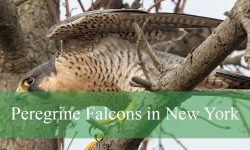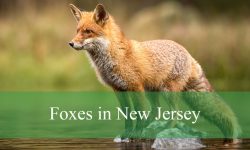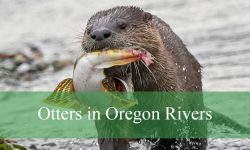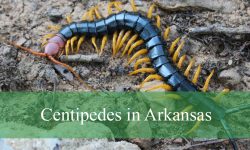In the lush forests and winding waterways of Washington State, one animal quietly shapes the landscape more than any other—the beaver. Known scientifically as Castor canadensis, this remarkable creature is far more than a simple dam builder. Beavers are natural engineers, ecosystem creators, and one of the most influential wildlife species in the Pacific Northwest.
Although most people recognize beavers as hardworking rodents with flat tails and big teeth, few truly understand their intelligence, behavior, and the crucial role they play in maintaining healthy ecosystems. In Washington, beavers are not just part of the wilderness—they are environmental architects who have been transforming rivers and wetlands for thousands of years.
This article explores secrets about beavers in Washington few people know—their biology, habits, survival strategies, and their surprising impact on water systems and climate resilience. By the end, you’ll see these fascinating animals not just as builders of dams, but as nature’s own water managers and silent guardians of biodiversity.
The Beavers of Washington: An Overview

Species Profile
The North American beaver (Castor canadensis) is one of only two beaver species in the world, the other being the Eurasian beaver (Castor fiber). In Washington, C. canadensis thrives across the state’s rivers, lakes, and wetlands—from the Cascade Mountains to the Puget Sound lowlands and even the dry eastern plains.
Adult beavers typically weigh between 35 and 70 pounds and measure around 3–4 feet long, including their signature paddle-shaped tail. Their waterproof fur, webbed hind feet, and ever-growing orange teeth make them perfectly adapted to life in and around water.
Habitat
Beavers prefer slow-moving streams, ponds, and marshes where they can easily construct dams and lodges. In Washington, they’re often found in:
- Western Washington’s temperate rainforests
- Eastern Washington’s riparian zones
- National forests such as Mount Baker-Snoqualmie and Okanogan-Wenatchee
- Urban wetlands near cities like Seattle, Tacoma, and Olympia
Their presence in both remote and suburban environments shows just how adaptable they are—a true sign of ecological success.
How Beavers Shape the Landscape
The Engineers of the Wild
Beavers are one of the few animal species capable of actively modifying their environment on a large scale. They build dams out of branches, mud, and stones to slow down water flow, creating deep ponds where they can hide from predators and store food for winter.
These ponds serve multiple ecological purposes:
- Preventing erosion by reducing stream velocity
- Recharging groundwater through slow water infiltration
- Creating wetlands that support birds, fish, and amphibians
- Filtering pollutants and improving water quality
In Washington’s drier eastern regions, beaver ponds have been shown to restore perennial water flow in streams that might otherwise dry up in summer months.
Dams as Climate Solutions
Scientists have recently recognized beaver activity as a natural form of climate adaptation. By holding and slowly releasing water, beaver-created wetlands help mitigate drought, control flooding, and even reduce wildfire spread by maintaining moisture in riparian corridors.
In short, every dam a beaver builds becomes a miniature ecosystem—and in Washington, thousands of these micro-wetlands quietly sustain life across the state.
Little-Known Beaver Behaviors
1. Beavers Slap Their Tails as Alarms
One of the most iconic beaver behaviors is the tail slap. When alarmed, a beaver will strike the water surface with its broad, flat tail, creating a loud splash that warns others of danger. The sound travels far, alerting the entire colony.
This defense mechanism also confuses predators by breaking visual contact underwater. Once the slap echoes, the beaver dives instantly, leaving a ripple as its only trace.
2. They Live in Extended Family Colonies
Beavers are social animals that live in family units known as colonies, usually consisting of:
- A breeding pair (monogamous mates for life)
- Yearlings from the previous year
- New kits born in spring
A single lodge can house 5–10 beavers. Each member plays a role in maintaining dams, gathering food, and grooming. When young beavers reach age two, they typically leave to establish new territories, expanding beaver populations throughout Washington’s waterways.
3. They Are Nocturnal Builders
Beavers are mostly nocturnal, working from dusk until dawn. Their construction skills are astonishing—they can fell trees more than a foot thick using only their razor-sharp incisors, which grow continuously throughout their lives.
At night, you might hear faint gnawing or splashing along a quiet riverbank. These sounds are the symphony of Washington’s nighttime architects at work.
Diet and Feeding Habits
Strictly Vegetarian
Despite their industrious reputation, beavers are strict herbivores. They feed on the bark, leaves, and twigs of trees like aspen, cottonwood, willow, alder, and birch—species common across Washington’s riparian forests.
In summer, they eat aquatic plants, roots, and grasses. In winter, they rely on submerged food caches—branches stored near their lodges and preserved beneath the ice.
Eco-Friendly Chewers
While their gnawing can sometimes damage young trees or landscaping, this behavior also promotes forest renewal. By selectively felling trees, beavers create openings for sunlight to reach the forest floor, encouraging regrowth and increased plant diversity.
The Architecture of Beavers
Lodges: Nature’s Safe Houses
Beaver lodges are dome-shaped structures made of sticks, mud, and vegetation. They often rise several feet above the waterline and include underwater entrances to keep out predators. Inside, chambers are lined with wood shavings for warmth and insulation.
These lodges can last for years, passed down through generations, and often become miniature sanctuaries for other species like muskrats and ducks.
Dams: Complex and Strategic
Each dam is uniquely designed for its environment. Beavers instinctively listen for the sound of running water—a cue to build or repair. The louder the sound, the more vigorously they work to muffle it, sealing leaks until the flow quiets.
In Washington’s Cascade foothills, some beaver dams have been measured at over 300 feet long, forming wetlands large enough to support herons, otters, and salmon.
Beavers and Salmon: An Unlikely Partnership
Helping Fish Thrive
Contrary to old myths, beaver dams do not block salmon migration. In fact, they often help. The ponds behind dams slow water flow, creating safe nurseries for young salmon to grow before heading downstream.
Research in the Methow and Skagit River basins shows that salmon fry survival rates increase dramatically in areas with active beaver ponds. These wetlands offer cooler temperatures, more shelter, and abundant insect life.
Restoring Lost Ecosystems
Beavers are now recognized as essential allies in salmon restoration projects across Washington. The Beaver Restoration Program, led by the Washington Department of Fish and Wildlife (WDFW), relocates nuisance beavers from urban areas to degraded watersheds where their natural engineering can heal ecosystems.
Myths and Misconceptions About Beavers
Myth |
Truth |
|---|---|
Beavers kill trees for no reason. |
False. They use trees for food and construction, stimulating regrowth. |
Beaver dams cause flooding. |
Only when built in the wrong areas; in nature, they prevent erosion and moderate floods. |
Beavers eat fish. |
False. They are strict vegetarians. |
Beavers carry dangerous diseases. |
Rarely. Most are healthy and pose no threat to humans. |
Removing beavers helps river systems. |
False. Removing them often leads to erosion and habitat loss. |
Beavers and Humans in Washington
Coexistence Challenges
While most people appreciate beavers’ ecological benefits, conflicts sometimes arise. Flooded roads, damaged culverts, and felled ornamental trees can frustrate landowners.
Wildlife agencies encourage non-lethal solutions like flow devices (“beaver deceivers”)—pipes that allow water to pass through dams without triggering beaver repairs. Such measures allow coexistence while preserving wetlands.
Urban Encounters
Surprisingly, beavers live even in urban areas like Seattle’s Green Lake and Bellevue’s Mercer Slough. Residents occasionally spot them swimming at dusk, dragging branches or grooming on the banks.
Their presence in cities is a testament to Washington’s successful environmental restoration and clean water initiatives.
Strange and Fascinating Beaver Facts
- Their teeth are orange because of iron, which strengthens enamel against constant gnawing.
- They can stay underwater for up to 15 minutes thanks to special valves that close their ears and nostrils.
- Beavers create “beaver meadows” when old dams decay—fertile areas that become lush grasslands.
- Their lodges have two levels: a dry living area above and a water entryway below.
- They slap tails not only for warning but also to express dominance or excitement.
- Their fur is naturally oily, providing waterproofing superior to most synthetic materials.
- Each beaver family can manage an entire wetland complex spanning several acres.
- Beavers are monogamous, staying with one mate for life.
The Environmental Legacy of Beavers in Washington
Natural Water Managers
Beavers have earned the nickname “nature’s engineers” for good reason. In drought-prone regions of Washington, reintroducing beavers has revived streams that had gone dry for decades. Their dams raise water tables, support vegetation, and bring wildlife back to once-barren landscapes.
Biodiversity Boosters
Wherever beavers go, life follows. Their wetlands attract ducks, songbirds, amphibians, fish, and mammals—from great blue herons to black bears. In one study, beaver ponds supported over 50% more wildlife species than surrounding areas without them.
Fighting Wildfires
In 2020, researchers discovered that beaver wetlands can act as natural firebreaks. When wildfires swept through parts of Washington and Oregon, areas around beaver-created ponds stayed green while nearby vegetation burned. This makes beaver restoration an increasingly important climate resilience tool.
Conservation and Protection
Legal Status
Beavers are classified as furbearers in Washington, meaning regulated trapping is allowed under permit. However, conservationists strongly discourage unnecessary removal due to their ecological benefits.
Reintroduction Projects
Organizations like the Methow Beaver Project and the Mid-Columbia Fisheries Enhancement Group work to capture and relocate nuisance beavers into headwater streams. These projects restore degraded ecosystems, reduce erosion, and improve fish habitat.
Citizen Involvement
Residents can help by reporting beaver activity to local wildlife offices, protecting riparian vegetation, and supporting habitat restoration programs.
FAQs About Beavers in Washington
Are beavers dangerous to humans?
No. They are shy, nocturnal, and avoid people. However, they may defend themselves if cornered.
Do beavers destroy trees in yards?
They may chew trees near water, but protective fencing can prevent this without harming the animals.
Are beavers good or bad for rivers?
They’re overwhelmingly beneficial—creating habitats, filtering water, and reducing erosion.
Can beavers live in cities?
Yes. They have adapted to urban waterways and are occasionally spotted in Seattle, Olympia, and Spokane.
What time of day are beavers active?
Mostly at night or early morning, when they gather food and maintain dams.
Do beavers mate for life?
Yes. Beavers are monogamous and remain with their partner for many years, raising offspring together.
Conclusion
The beavers of Washington are more than industrious builders—they’re ecological superheroes. Their dams, lodges, and wetlands sustain countless species, restore damaged rivers, and even help fight climate change.
For centuries, humans misunderstood beavers as pests, but science now reveals their true importance as ecosystem engineers that bring water, life, and resilience wherever they go. From the Olympic Peninsula’s lush streams to the dry valleys of eastern Washington, beavers continue to shape the land just as they have since the Ice Age.
So next time you see a quiet pond backed by a small dam, take a closer look—you might just be witnessing one of Washington’s most extraordinary secrets at work, hidden beneath rippling water and the whisper of trees.






